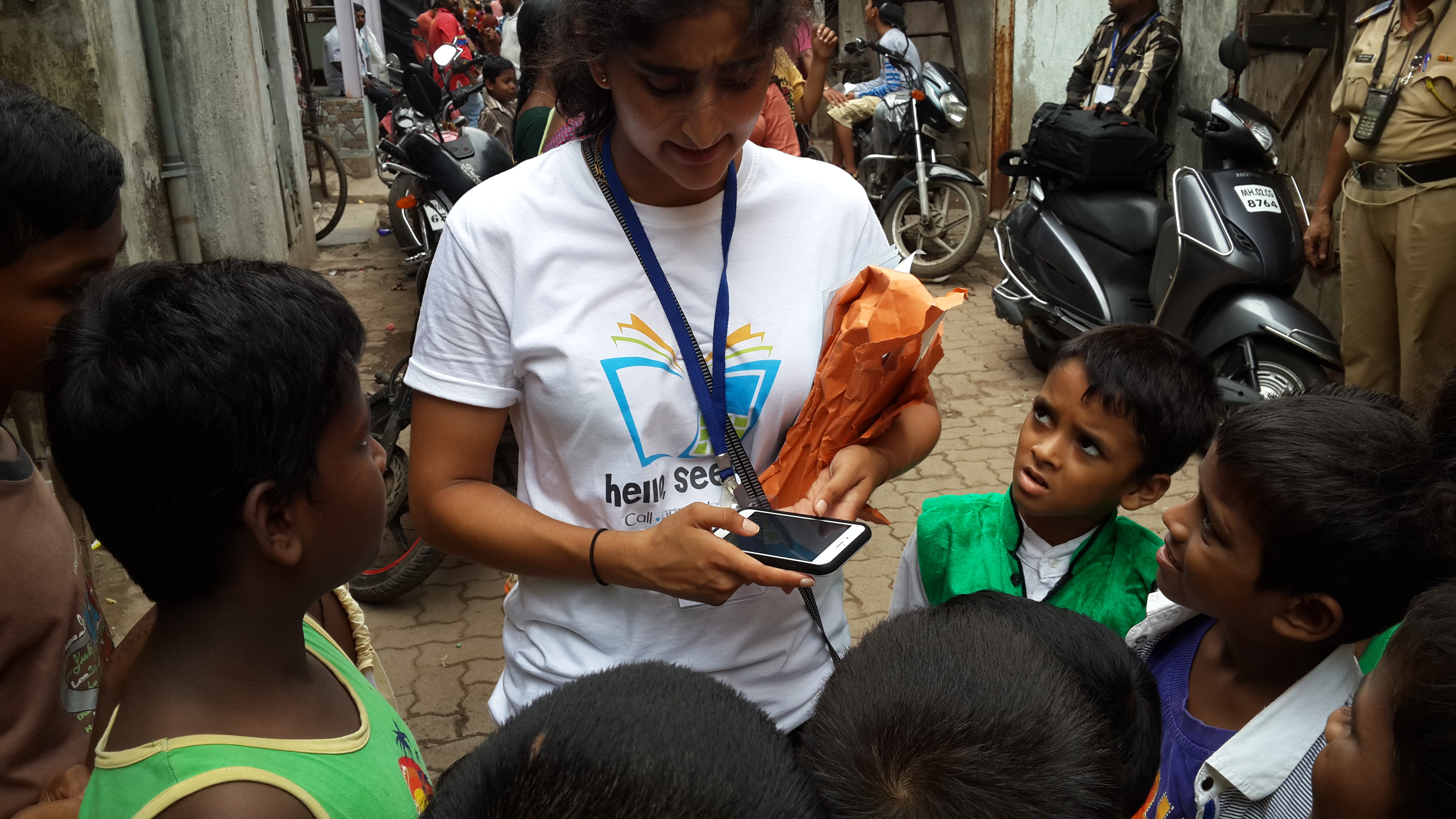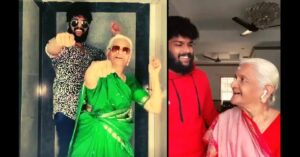Two Princeton Students Are Helping Hundreds of Indians Learn English For Free Using Mobile Phones
A basic mobile phone can become a tool of learning, thanks to Vaasvi Goyal and Kasturi Shah’s free English teaching service: Hello,Seekho

A basic mobile phone can become a tool of learning, thanks to Vaasvi Goyal and Kasturi Shah’s free English teaching service: Hello,Seekho
An eight-year-old in West Delhi eagerly waits for her auto-driver father to get home so she can start her daily English lessons.
In Mumbai, a school-dropout squeezes in his English lessons between waiting tables at a popular eatery.
A busy cab driver takes a break from zooming across the streets of the capital to complete his lesson for the day over a steaming cup of tea.
Three school-going brothers in Dharavi huddle around their mother’s phone, all ready to master the English language.
To these and hundreds of others in Delhi and Mumbai, their new English teacher is their mobile phone, thanks to Hello, Seekho.
Created by Vaasvi Goyal and Kasturi Shah, Hello, Seekho offers free audio education in English. Learners simply call the toll-free number 1800-3000-0881, pick a lesson by pressing a number from the options provided in the pre-recorded voice message and get started.

Co-founder Kasturi Shah says “The idea is that we cut across all social and economic boundaries to make education free and easily accessible to any learner of any age, no matter where they are raised and what their educational background is. Currently, the service is available in the slums of West Delhi and Dharavi, Mumbai.”
“There are so many kids in India right now who are first generation learners and who just don’t have the resources so many of us grew up with. We are trying to supplement their school learning. It is great if we are their primary method of learning, but our main goal is to help these kids stay in school,” says Vaasvi Goyal, explaining the inspiration behind the initiative.
Vaasvi and Kasturi are both pursuing their undergraduate degrees at Princeton University and first met in Delhi at an event: “We just really got along well,” Vaasvi recalls. “We both also felt that there were so many resources at Princeton that we could use to effect change in India and bridge the two worlds.”
In October 2013, during their sophomore year, Vaasvi and Kasturi got together to explore their options: “We listed out all the problems we wanted to fix and all the challenges we felt that India was facing at the time. That was when we realised that we both really care about education,” says Vaasvi. “That got us thinking about what was out there that we could use to make education accessible to everyone.”
The duo then hit upon the idea of using mobile phones. Vaasvi, who has volunteered with NGOs involved in educating underprivileged kids, says:
“The idea came from personal experience of teaching these kids and being in these communities. We found that everyone these days has a basic mobile phone; it’s a ubiquitous resource.”

“The biggest thing for us is that it is a pre-established distribution network. There are 900 million mobile phone users in India and most of them use basic phones,” says Kasturi.
By 2014, the duo had developed a business plan, one that helped them win funding during a seed-funding competition at Princeton. Hello, Seekho was launched in August 2014 in the slums of West Delhi. By August 2015, the initiative had also been launched in Dharavi, Mumbai.
Today, Hello, Seekho offers 65 lessons spread across six levels. Each lesson is about 3 to 4 minutes long and uses Hindi as a medium to teach English.

The pre-recorded lessons can be accessed by calling the toll-free number and choosing the level and lesson by pressing the number mentioned in the automated main menu.
The lessons build on themselves and use repetition to ensure clarity of concept:
“So if you’re learning greetings, you do it in Level 1, Lesson 1, and then repeat it in Level 1, Lesson 2. Then we bring it back again in Level 1, Lesson 5 when you’re learning about vehicles,” explains Kasturi.
“The concept is repeated over and over again till learners can understand the different contexts in which it is used,” Vaasvi adds.
The curriculum is also scaled along different metrics like grammatical structure, vocabulary and comprehension:
“They go from learning the alphabet to being able to have a conversation in some kind of a work context, to understanding a fairly complex story and even speaking in past, present and future tenses,” says Kasturi.

The response so far has been exceptional. “When we started, we were targeting kids from Grade 3 to Grade 8 or 9. But we have seen adults also who are using it to learn English,” says Vaasvi.
“We had a certain audience in mind, but having done a bunch of feedback calls, we realise that pretty much anybody who wants to learn can,” agrees Kasturi.
But it hasn’t all been smooth-sailing.
Between classes, internships and summer plans, the two rarely got time to work together: “I think we worked together for a week, and then worked apart for eight weeks,” adds Kasturi.
“We also faced different challenges, because I worked a lot on setting up the pilot and Kasturi worked a lot on expanding it. For me, the big challenge was taking an idea that we had talked about in Princeton, that we had put down on paper… and actually creating something from it, making it a reality,” says Vaasvi.
Having to run an initiative from halfway across the world has not been easy either: “It has been really hard,” admits Kasturi. This is the reason that the duo has invested a significant amount of time in establishing an efficient organisational structure on the ground: “So now it becomes less about the day-to-day running as opposed to delegation and checking in with people,” she says.
“We’ve also learned that if you really care about something and you really want to do something, you just find the time to do it. That’s definitely the case for us,” Kasturi says.

To date, Hello, Seekho has received a total of 1,65,000 calls. “Most calls last for around 3 to 4 minutes, which tells us that they are completing their lessons. Our repeat callers have also called us around 50 times, so they are going through most of the levels and lessons,” says Vaasvi.
Their future plans include expanding not just their network of users, but their curriculum as well: “We really feel that in India right now, learning English is very much a boon in terms of how it can help you out of certain economic situations,” says Vaasvi.
“Our goal is to get someone comfortable with conversational English, so it can positively impact their job opportunities and their choices of after-school learning,” she says.

“That’s why we started this,” Kasturi adds. “We want to make Hello, Seekho an indispensable tool for learners across India and that’s one of the reasons that we are doing such a big push for funding,” she says.
Hello, Seekho is currently running a crowd-funding campaign that can be found here.
You can learn more about the wonderful initiative here. You can also connect with them on their Facebook page here.
Like this story? Or have something to share? Write to us: [email protected], or connect with us on Facebook and Twitter (@thebetterindia).
This story made me
- 97
- 121
- 89
- 167
Tell Us More
We bring stories straight from the heart of India, to inspire millions and create a wave of impact. Our positive movement is growing bigger everyday, and we would love for you to join it.
Please contribute whatever you can, every little penny helps our team in bringing you more stories that support dreams and spread hope.



















